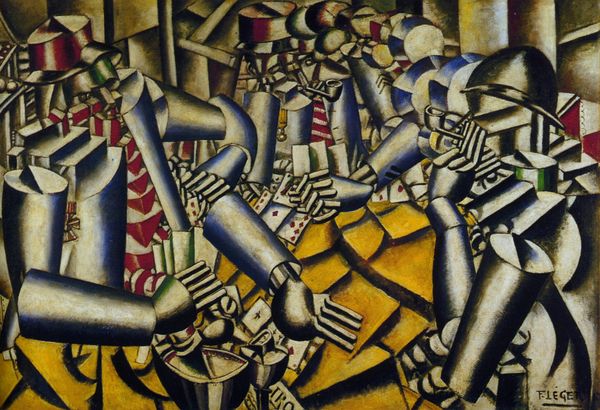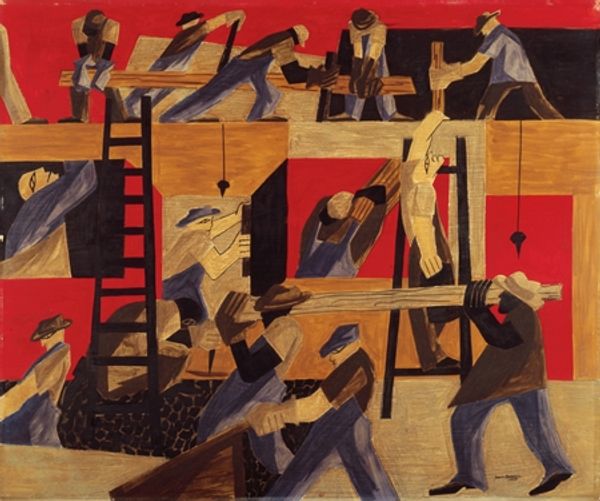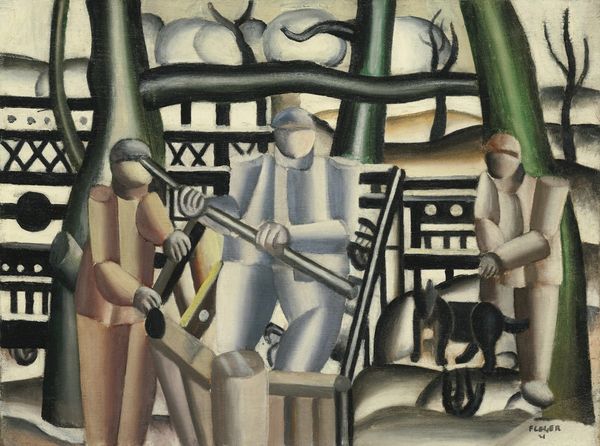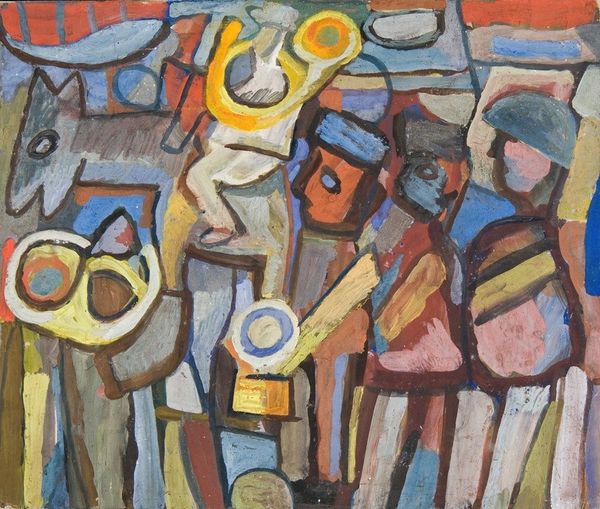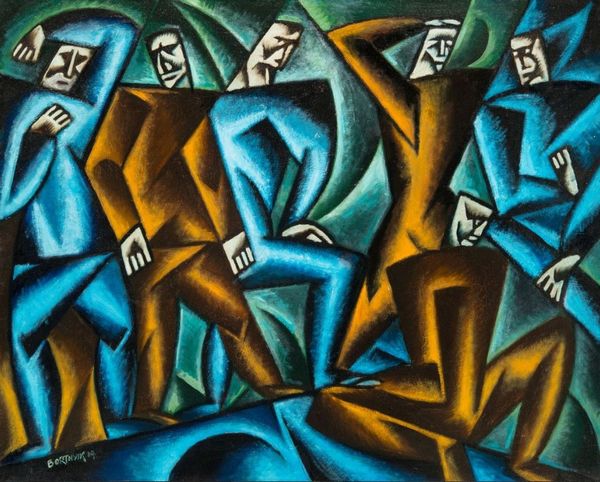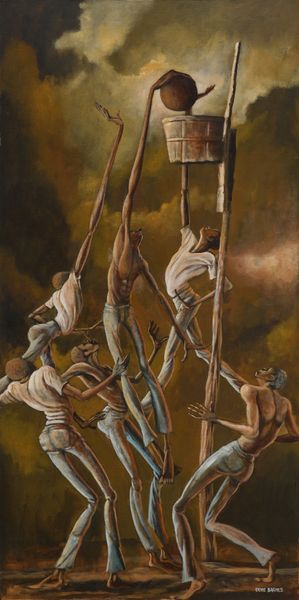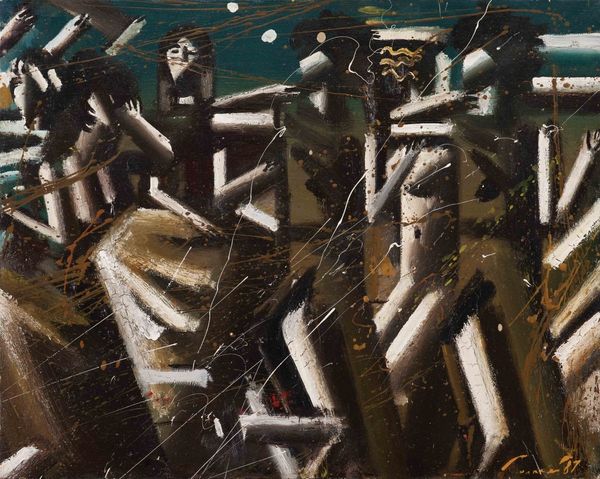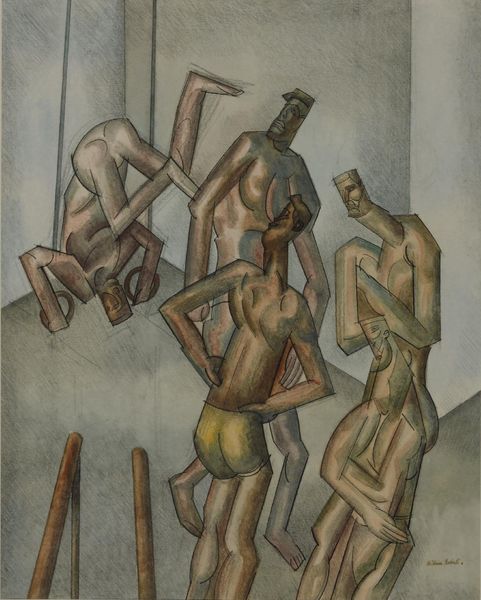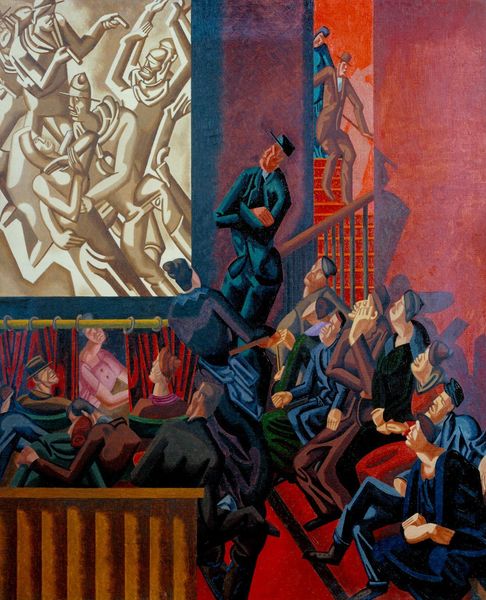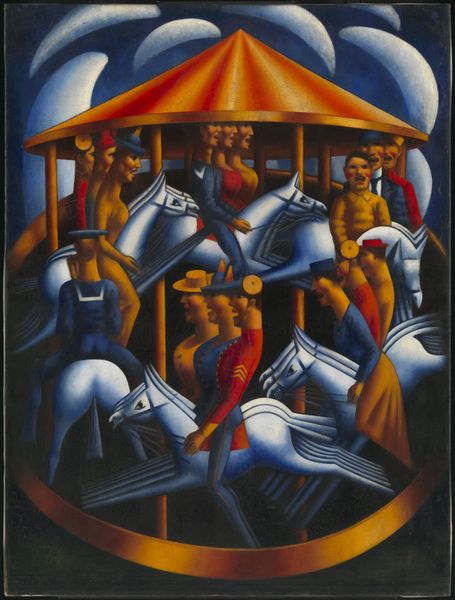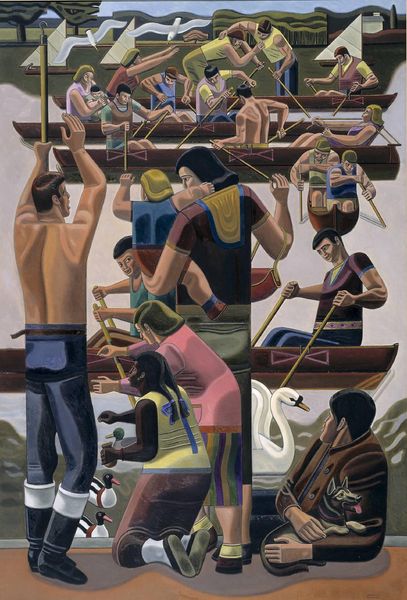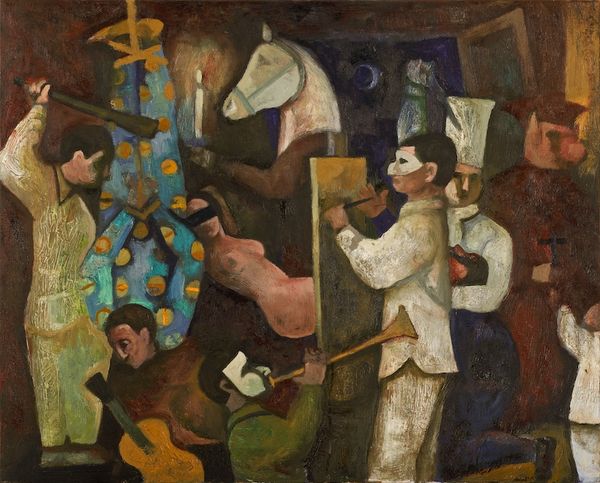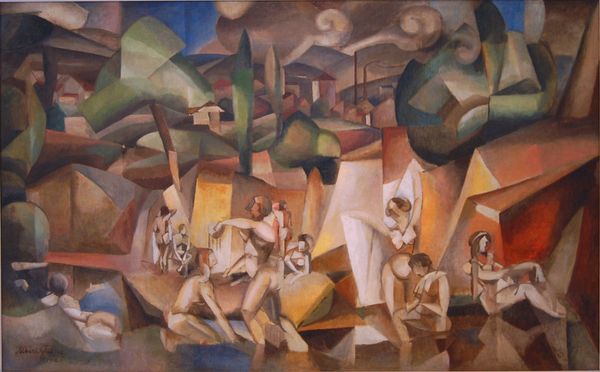
Dimensions: support: 495 x 591 x 17 mm frame: 690 x 790 x 90mm
Copyright: © The estate of William Roberts | CC-BY-NC-ND 4.0 DEED, Photo: Tate
Curator: William Roberts' "Deposition from the Cross," currently housed at the Tate, presents a striking scene. The compressed figures and dark palette create a palpable sense of gravity. Editor: It does, although initially it feels almost sculptural because of the emphasis on form and how the workers’ bodies are rendered. Look at how the artist used the ladders. I’m wondering about the labor involved in creating such a piece? Curator: Absolutely, there’s a clear engagement with the physical act of making. The figures are rendered with an almost brutalist simplification, emphasizing the laborers' roles in the scene. Note the artist's use of raw materials for the figures. Editor: Indeed. Roberts seems intent on democratizing what had historically been elite religious subject matter, by centering working class bodies in this act of removing the body. Curator: Precisely, shifting the focus from divine suffering to the communal labor surrounding it. The artwork definitely makes me think about the process of grief and care. Editor: It's a powerful reframing, offering a lens through which we can see both historical narratives and contemporary experiences of loss and solidarity.
Comments
tate 8 months ago
⋮
http://www.tate.org.uk/art/artworks/roberts-deposition-from-the-cross-t07740
Join the conversation
Join millions of artists and users on Artera today and experience the ultimate creative platform.
tate 8 months ago
⋮
Throughout the First World War (1914-18), Roberts was employed as a gunner in the Royal Field Artillery. On his return to Britain he began to paint scenes characteristic of modern, urban life. The restaurant, dance hall and cinema (Tate T00813) were depicted in bold colours and in a manner expressing his sympathy towards the proletariat of post-war London. Like many artists, including Cedric Morris (1889-1982) and John Nash (1893-1977), who had experienced the horror of the war, he also turned to more traditional subjects. Deposition from the Cross is one of the few religious paintings that Roberts produced in the years immediately following the war. In 1923 he exhibited The Crucifixion at his first solo exhibition at the Chenil Galleries in London, and a year later drew St Christopher holding Christ in his arms (William Roberts RA, Fitzwilliam Museum, cat.no.17). At the same time as Roberts was painting the Deposition, Stanley Spencer (1891-1959), who had been one of his fellow students at the Slade, was working on The Resurrection, Cookham (Tate N04239), in which men and women are shown emerging from their graves to the earthly paradise of a Berkshire village. Both Roberts and Spencer may have chosen to depict a Biblical subject in response to the horror and suffering they had experienced throughout World War I. Like Spencer, Roberts portrays the religious event in a contemporary setting. Each figure in the composition takes an active part in taking Christ down from the cross and lowering him to the ground. The only exception is the woman to the left of the painting who is shown lamenting Christ's death. Roberts may have intended this figure to be identified with the Virgin Mary or the Mary Magdalene who are both present in traditional representations of the subject. In 1914 Roberts had met Percy Wyndham Lewis (1882-1957) and subsequently became one of the signatories of the Vorticist Manifesto in the first volume of Blast. The bold, belligerent attitudes expressed in the magazine reflected the confidence and aspirations of this group in the face of an industrialised world. Although short-lived, the pervasive influence of this movement on Roberts is demonstrated by the distortion of the figures, juxtaposition of strong colours and angular structure of the composition. Describing Roberts in 1927, one year after this painting, William Gaunt wrote 'You cannot live in great cities, where all shapes are geometrical, and there are strange and intricate mechanisms on every hand, which have no natural significance, without at least a few people being affected by their character. Roberts has evidently been so affected' (quoted in Corbett, p.86). Further reading:David Peters Corbett, The Modernity of English Art 1914-30, Manchester, 1997William Roberts ARA: Retrospective Exhibition, exhibition catalogue, Arts Council, London, 1965William Roberts RA: Watercolours, Drawings and Etchings, exhibition catalogue, Fitzwilliam Museum, Cambridge, 1985 Heather BirchallFebruary 2002
